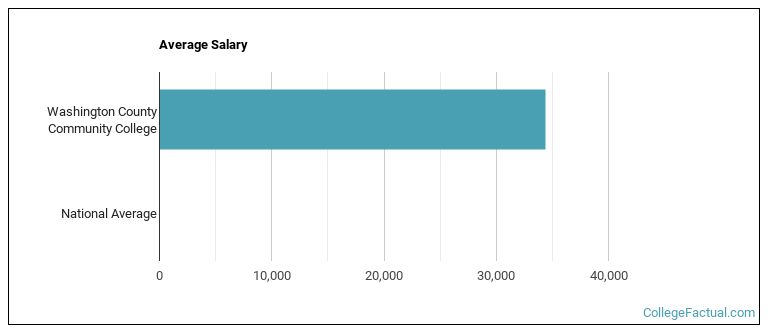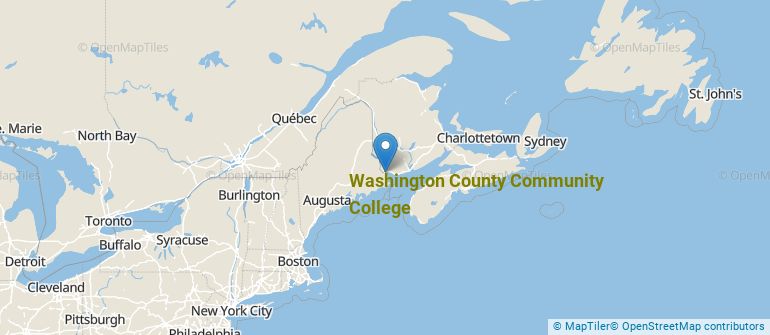 by our College Data Analytics Team
by our College Data Analytics TeamExplore the best ranked schools for the programs you are most interested in.
Washington County Community College was not ranked in College Factual's Best Overall Colleges report this year. This may be because not enough data was available.
See all of the rankings for Washington County Community College.
Returning adults and other non-traditional students may appreciate the fact that Washington County Community College has an open admissions policy. This means that you'll only have to submit basic materials, which may include proof that you completed high school or an equivalent program.
The student to faculty ratio at Washington County Community College is an impressive 8 to 1. That's quite good when you compare it to the national average of 15 to 1. This is a good sign that students at the school will have more opportunities for one-on-one interactions with their professors.
In addition to the student to faculty ratio, some people look at what percentage of faculty members are full-time as a sign of how much time professors will be able to spend with their students. This is because part-time teachers may not be be on campus as much as their full-time counterparts.
The full-time faculty percentage at Washington County Community College is 48%. This is comparable to the national average of 47%.
The freshmen retention rate of 73% tells us that most first-year, full-time students like Washington County Community College enough to come back for another year. This is a fair bit higher than the national average of 68%. That's certainly something to check off in the good column about the school.
During the 2017-2018 academic year, there were 354 undergraduates at Washington County Community College with 160 being full-time and 194 being part-time.
| $0-30 K | $30K-48K | $48-75 | $75-110K | $110K + |
|---|---|---|---|---|
| $3,341 | $2,773 | $5,744 | $8,877 | $10,287 |
The net price is calculated by adding tuition, room, board and other costs and subtracting financial aid.Note that the net price is typically less than the published for a school. For more information on the sticker price of Washington County Community College, see our tuition and fees and room and board pages.
Almost 66% of college students who graduated with the class of 2018 took out student loans, but that percentage varies from school to school. At Washington County Community College, approximately 17% of students took out student loans averaging $2,945 a year. That adds up to $11,780 over four years for those students.
Get more details about paying for Washington County Community College.

See which majors at Washington County Community College make the most money.
Get more details about the location of Washington County Community College.

Contact details for Washington County Community College are given below.
| Contact Details | |
|---|---|
| Address: | One College Drive, Calais, ME 04619 |
| Phone: | 207-454-1000 |
| Website: | www.wccc.me.edu/ |
| Most Popular Majors | Bachelor’s Degrees | Average Salary of Graduates |
|---|---|---|
| Electrical & Power Transmission Installers | 17 | NA |
| Vehicle Maintenance & Repair | 15 | NA |
| Human Services | 7 | NA |
| Mechanic & Repair Tech (Other) | 6 | NA |
| Precision Metal Working | 6 | NA |
| Ground Transportation | 6 | NA |
| Plumbing & Water Supply | 4 | NA |
| Teacher Education Grade Specific | 4 | NA |
| Allied Health & Medical Assisting Services | 3 | NA |
| Business Administration & Management | 2 | NA |
Online learning options are becoming more and more popular at American colleges and universities. Online classes are great for students who have busy schedules or for those who just want to study on their own time.
In 2022-2023, 309 students took at least one online class at Washington County Community College. This is an increase from the 223 students who took online classes the previous year.
| Year | Took at Least One Online Class | Took All Classes Online |
|---|---|---|
| 2022-2023 | 309 | 239 |
| 2021-2022 | 223 | 169 |
| 2020-2021 | 270 | 130 |
| 2018-2019 | 61 | 9 |
Learn more about online learning at Washington County Community College.
Footnotes
*The racial-ethnic minorities count is calculated by taking the total number of students and subtracting white students, international students, and students whose race/ethnicity was unknown. This number is then divided by the total number of students at the school to obtain the racial-ethnic minorities percentage.
References
More about our data sources and methodologies.